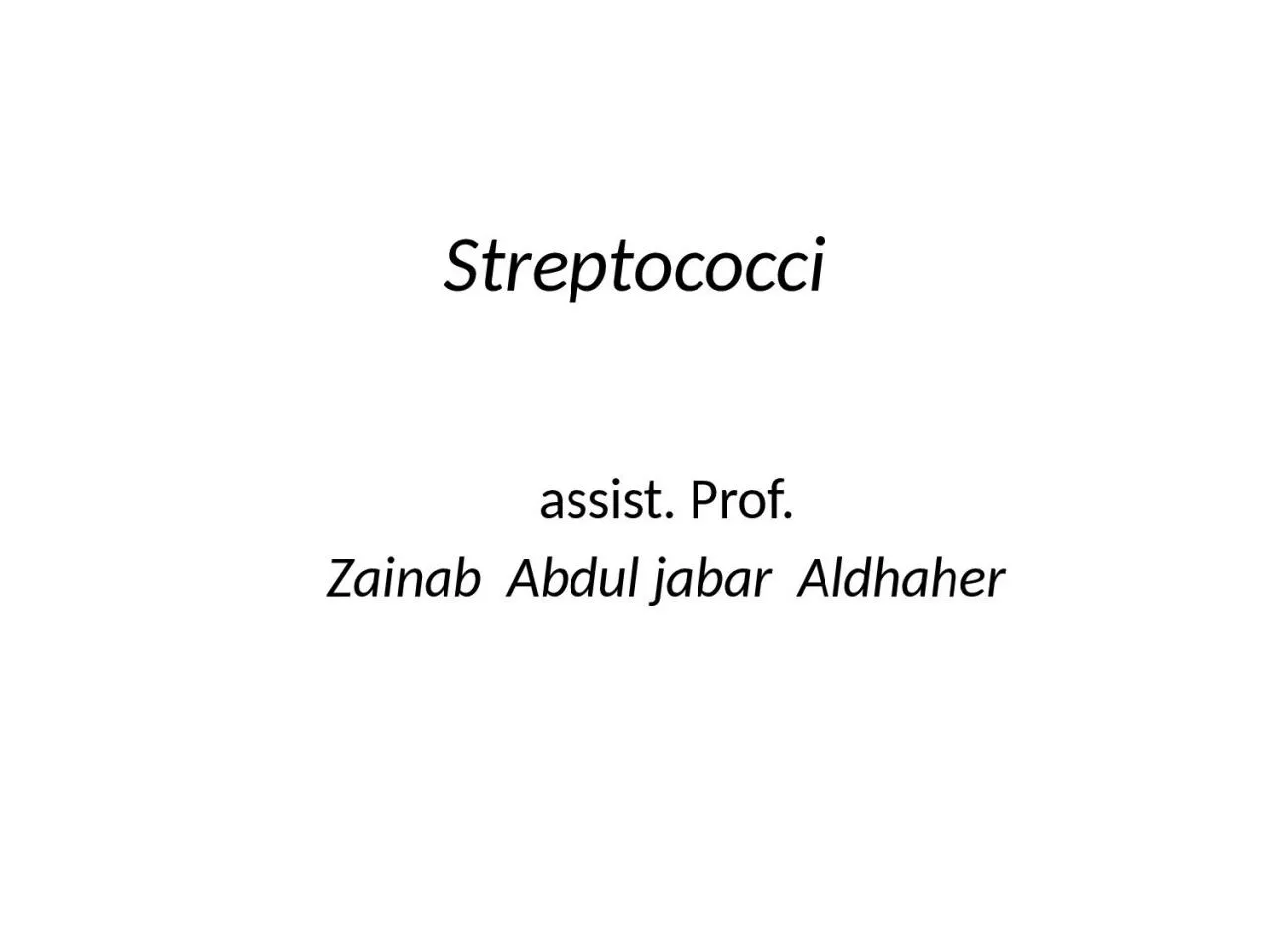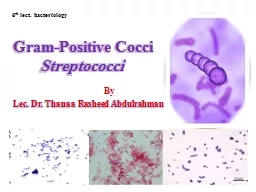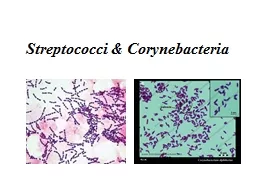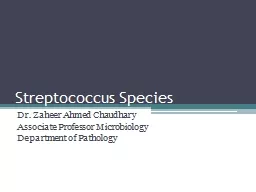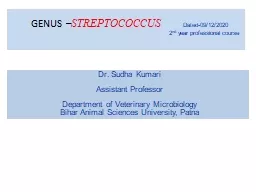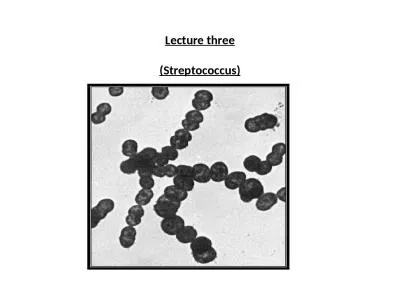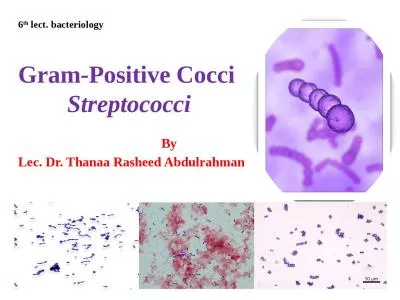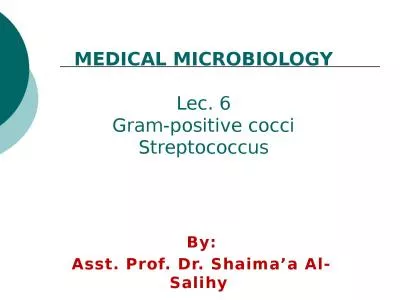PPT-Streptococci assist. Prof.
Author : CherryPoppins | Published Date : 2022-08-03
Zainab Abdul jabar Aldhaher Streptococcus is a genus of spherical Grampositive bacteria belonging to the phylum Firmicutes and the lactic acid bacteria
Presentation Embed Code
Download Presentation
Download Presentation The PPT/PDF document "Streptococci assist. Prof." is the property of its rightful owner. Permission is granted to download and print the materials on this website for personal, non-commercial use only, and to display it on your personal computer provided you do not modify the materials and that you retain all copyright notices contained in the materials. By downloading content from our website, you accept the terms of this agreement.
Streptococci assist. Prof.: Transcript
Download Rules Of Document
"Streptococci assist. Prof."The content belongs to its owner. You may download and print it for personal use, without modification, and keep all copyright notices. By downloading, you agree to these terms.
Related Documents

